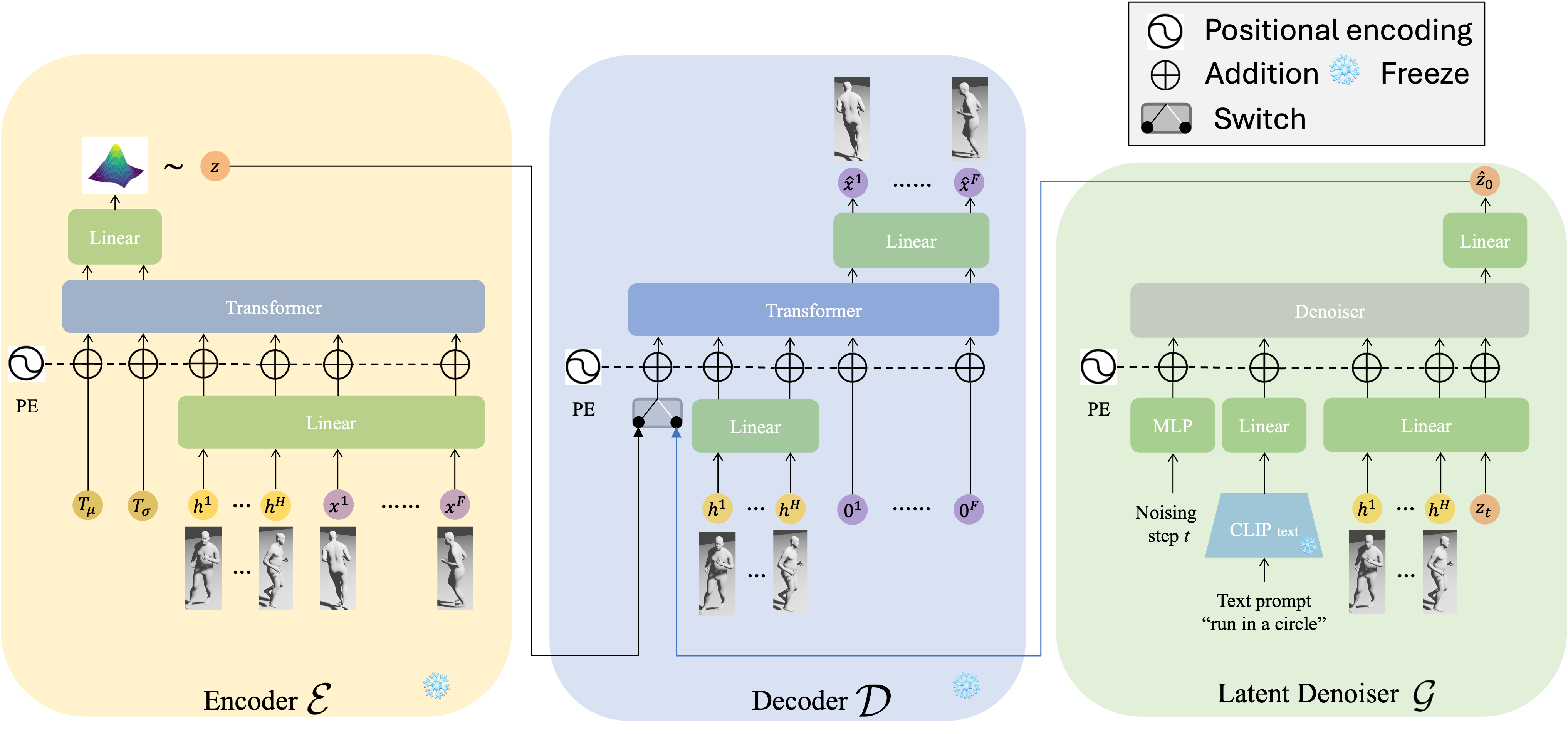
Abstract
Text-conditioned human motion generation, which allows for user interaction through natural language, has become increasingly popular. Existing methods typically generate short, isolated motions based on a single input sentence. However, human motions are continuous and can extend over long periods, carrying rich semantics. Creating long, complex motions that precisely respond to streams of text descriptions, particularly in an online and real-time setting, remains a significant challenge. Furthermore, incorporating spatial constraints into text-conditioned motion generation presents additional challenges, as it requires aligning the motion semantics specified by text descriptions with geometric information, such as goal locations and 3D scene geometry. To address these limitations, we propose DART, a Diffusion-based Autoregressive motion primitive model for Real-time Text-driven motion control. Our model, DART, effectively learns a compact motion primitive space jointly conditioned on motion history and text inputs using latent diffusion models. By autoregressively generating motion primitives based on the preceding history and current text input, DART enables real-time, sequential motion generation driven by natural language descriptions. Additionally, the learned motion primitive space allows for precise spatial motion control, which we formulate either as a latent noise optimization problem or as a Markov decision process addressed through reinforcement learning. We present effective algorithms for both approaches, demonstrating our model’s versatility and superior performance in various motion synthesis tasks. Experiments show our method outperforms existing baselines in motion realism, efficiency, and controllability.